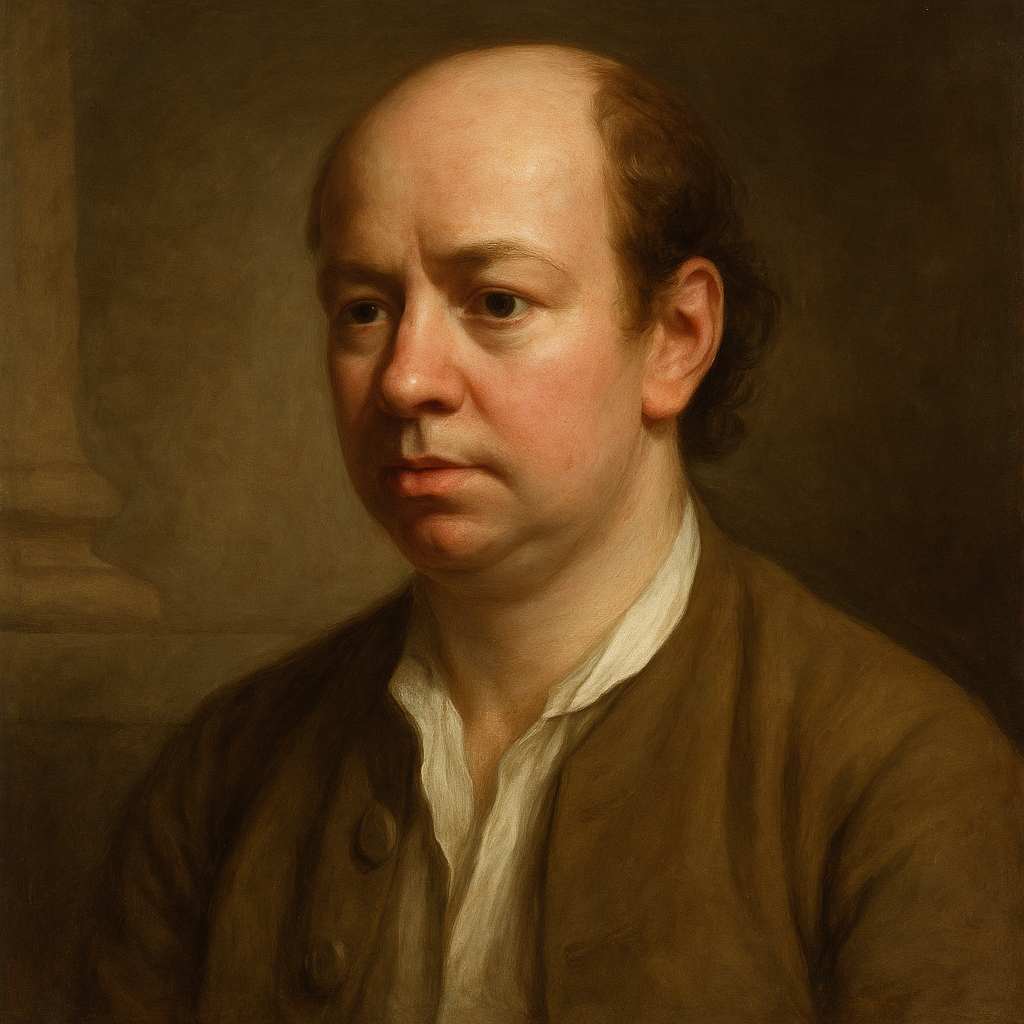The wretch condemn'd with life to part
Oliver Goldsmith
c.1728 to 1774

The wretch condemn'd with life to part,
Still, still on hope relies;
And ev'ry pang that rends the heart,
Bids expectation rise.
Hope, like the glimm'ring taper's light,
Adorns and cheers the way;
And still, as darker grows the night,
Emits a brighter ray.
Oliver Goldsmith's The wretch condemn'd with life to part
Introduction
Oliver Goldsmith's "The wretch condemn'd with life to part" represents one of the most elegant expressions of hope's persistence in the face of mortality within 18th-century English poetry. Through its mere eight lines, the poem achieves a remarkable depth of philosophical and emotional resonance, exploring the paradoxical relationship between despair and hope that characterizes the human condition. This analysis will examine the poem's formal structure, its rich imagery, and its engagement with both contemporary Enlightenment thought and timeless existential themes.
Form and Structure
The poem's structure demonstrates Goldsmith's masterful control of poetic technique. Written in two quatrains with an ABAB rhyme scheme, the poem employs alternating lines of iambic tetrameter and iambic trimeter, creating a musical quality that reflects its designation as a "Song." This alternation between longer and shorter lines creates a rhythmic pattern that mirrors the poem's thematic tension between despair and hope, darkness and light.
The first quatrain introduces the central paradox through direct statement, while the second quatrain develops the controlling metaphor of hope as a "glimm'ring taper's light." This structural division allows Goldsmith to move from the concrete situation of the condemned man to a more universal philosophical observation, effectively broadening the poem's scope while maintaining its emotional intimacy.
Imagery and Metaphor
At the heart of the poem lies the extended metaphor of hope as light, a comparison that draws upon a rich tradition of Western symbolic thought while achieving fresh resonance through Goldsmith's particular handling. The phrase "glimm'ring taper's light" is especially evocative, with the word "glimm'ring" suggesting both fragility and persistence. The taper - a thin candle - serves as a perfect vehicle for this dual quality, being both delicate and capable of illuminating darkness.
The image pattern develops through the poem's progress, culminating in the final paradox where darkness and light exist in inverse proportion: "And still, as darker grows the night, / Emits a brighter ray." This conclusion transforms the conventional association of darkness with despair by suggesting that hope's power actually increases in proportion to the darkness it confronts.
Philosophical and Religious Contexts
The poem emerges from and engages with multiple philosophical and religious traditions. Its opening situation - the "wretch condemn'd with life to part" - recalls the Christian tradition of death-bed consolation literature, while simultaneously participating in Enlightenment discourse about reason and human nature. The poem's rationalist framework is evident in its proposal of a psychological law: that hope invariably rises in response to suffering.
However, Goldsmith's treatment transcends simple Christian consolation or Enlightenment rationalism. The poem's power derives partly from its recognition of hope not as a reasonable response to circumstances (indeed, the condemned man's hope appears profoundly unreasonable), but as an essential and ineradicable aspect of human consciousness.
Language and Diction
Goldsmith's diction merits careful attention. The opening word "wretch" immediately establishes both the social status and emotional state of the protagonist, while "condemn'd" carries both legal and metaphysical weight. The verb "relies" in the second line is particularly rich in implications, suggesting both dependence and trust.
The poem's verbs trace a subtle progression from passive to active states: from "relies" through "rends" to "adorns," "cheers," and finally "emits." This progression reinforces the poem's movement from suffering to transcendence, from reception to radiation. The final verb "emits" is especially significant, suggesting an active force rather than mere passive illumination.
Cultural and Historical Context
Written in an age of public executions and severe penal codes, the poem's opening situation would have carried immediate relevance for Goldsmith's contemporary readers. However, the poem transforms this grim social reality into a meditation on universal human experience. The condemned man becomes an everyman figure, his extreme situation revealing truths about hope that apply more broadly to human suffering.
The poem's appearance in "The Vicar of Wakefield" (1766) adds another layer of context, as it functions within that novel's larger exploration of faith, suffering, and redemption. However, the poem's effectiveness as a standalone work demonstrates Goldsmith's ability to distill complex philosophical and emotional truths into memorable lyric form.
Literary Influence and Legacy
The poem's influence can be traced through subsequent Romantic treatments of hope and despair, particularly in works like Coleridge's "Dejection: An Ode" and Shelley's "Ode to the West Wind." Its central paradox - that hope strengthens as circumstances darken - became a recurring theme in Romantic literature, though few poets matched Goldsmith's economy of expression.
Modern readers might recognize echoes of the poem's central insight in works as diverse as Emily Dickinson's "Hope is the thing with feathers" and Viktor Frankl's writings about hope in extreme circumstances. The endurance of Goldsmith's fundamental insight speaks to its psychological truth and poetic power.
Conclusion
"The wretch condemn'd with life to part" achieves its remarkable effect through the perfect marriage of form and content, using its carefully constructed poetic elements to express a profound psychological and spiritual truth. Its primary achievement lies in its ability to transform a specific, extreme situation into a universal statement about human nature, while maintaining both emotional power and philosophical complexity.
The poem's enduring relevance stems from its recognition of hope not as mere optimism but as an essential aspect of human consciousness that paradoxically strengthens in adversity. Through its elegant fusion of formal mastery and philosophical depth, Goldsmith's poem continues to speak to readers across centuries, offering both consolation and insight into the human condition.
This brief song, through its artistic excellence and psychological penetration, earns its place among the most significant short lyrics in English literature, demonstrating how formal perfection can serve to crystallize fundamental truths about human experience. Its achievement reminds us that poetry's highest function is not merely to describe or decorate, but to illuminate the deepest patterns of human experience and consciousness.
This text was generated by AI and is for reference only. Learn more
Want to join the discussion? Reopen or create a unique username to comment. No personal details required!



Comments
No comments yet. Be the first to comment!